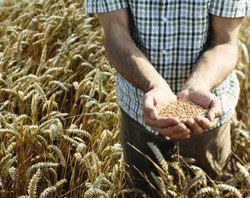Largest wheat chromosome sequenced
Wheat (Triticum spp.) is one of the world's most important crops, but the size and complexity of the wheat genome has limited progress in sequencing and characterisation. Recent studies have suggested that gene duplications and rearrangements are unusually common in wheat compared to other crop plants. The EU-funded 'Origin, fate and function of wheat genes noncollinear with the other cereal genomes' (NONCOLLINEARGENES) project aimed to use the reference sequence of chromosome 3B produced by the French ANR funded project 3BSEQ to better understand the role of duplications in the evolution of the wheat genome. Bioinformatics tools were used to compare chromosome 3B in wheat to that of Oryza sativa (rice), Brachypodium distachyon (a grass) and Sorghum bicolor (sorghum wheat). In particular, the project investigated non-collinear, or non-syntenic, genes — these are functional groups of genes that are found in dispersed locations on the chromosome and result from intense duplication activities. They found a high rate of non-synteny in chromosome 3B (38 %, compared to 5 % for the other species), suggesting that wheat evolution has recently accelerated. These were particularly common on the outer edges of the chromosome. The results also indicate that nonsyntenic genes provide functional diversity and a potential for adaptation. Gene duplication was also confirmed to be unusually common on chromosome 3B. Wheat showed double the rate of intrachromosomal duplication compared to the other species, and 82 % of these events occurred in the last 40 million years. NONCOLLINEARGENES confirmed that wheat has undergone rapid evolution in its recent history and provided new insight into the functional impact of duplications. The knowledge gained contributes significantly to the growing understanding of the complex genetics of wheat.
Keywords
Wheat, chromosome 3B, gene duplication, cereal genome, bioinformatics, non-syntenic, genetics



